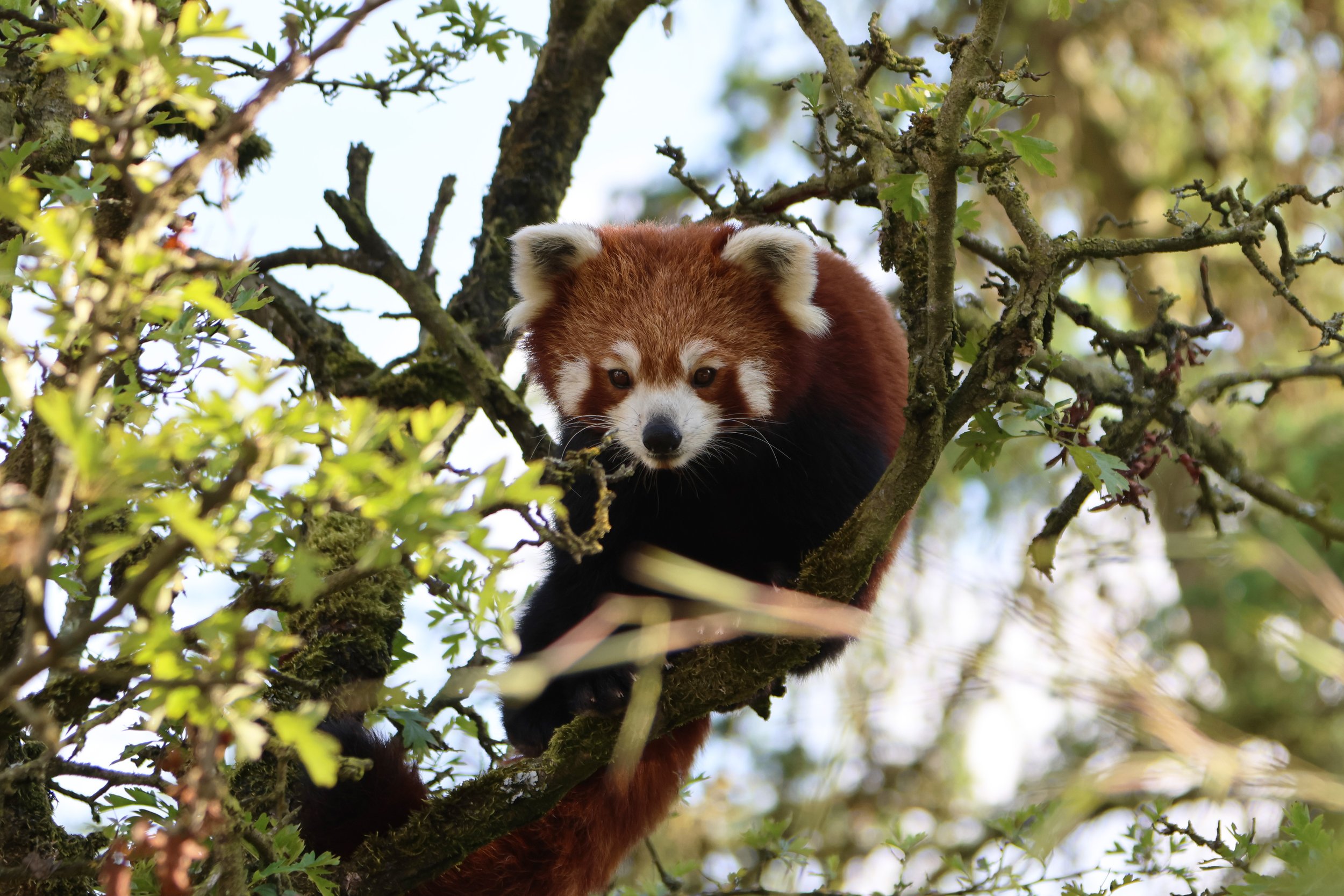
RED PANDA
Ailurus fulgens
The red panda is a small arboreal mammal with distinctive reddish-brown fur, a long bushy tail and a masked face similar to a racoon. Adults typically weigh between 4.5 to 6.2 kilograms and measure about 50 to 64 centimetres in body length, with the tail adding another 28 to 59 centimetres. Despite its name, the Red Panda is not closely related to the Giant Panda but is the only living member of its own family, Ailuridae.
Here at the park we are home to two red panda sisters, Esha and Riya! After their arrival in July 2024 they have settled into their new home really well and are enjoying the huge habitat we have built especially for them.
Diet
Red Pandas are primarily herbivorous, with bamboo shoots and leaves making up about 95% of their diet. They also eat fruits, berries, acorns, roots, and occasionally insects, small birds, and eggs. Their digestive systems are not particularly efficient at processing bamboo, so they must consume large quantities to meet their nutritional needs. Red Pandas have a pseudo-thumb, an extended wrist bone that aids in grasping bamboo stems and leaves.
Adaptations:
The colouring of the red panda enables it to blend in with reddish moss and white lichen in fir trees. They spend much of their time in trees and are excellent climbers. The tail is used for balance when the red panda is in a tree, and while on the ground the panda carries it straight and horizontally. It is also used as a pillow. The presence of an extra thumb on each forepaw helps them grasp bamboo. They communicate by a series of snorts, huffs, barks, bleats, short whistles, or squeaking noises. When frightened or angry, red pandas stand on their hind legs and produce a series of snorts or sharp spitting hisses just like a cat. The red panda's facial stripes and other markings vary widely and give each red panda its own distinctive look.
Threats:
Red pandas are endangered and are legally protected in India, Bhutan, China, Nepal and Myanmar. Their primary threats are habitat loss and degradation, human interference and poaching. Researchers believe that the total population of red pandas has declined by 40 percent over the past two decades. It is probable that this decline will continue in the coming years. Habitat loss is primarily attributed to logging, grazing livestock, demand for firewood, human encroachment and farming. The decrease in suitable habitat for red pandas has coincided with the increase in human populations throughout Asia; with human encroachment comes livestock, agriculture and dogs, all of which produce different threats to this species.
Fun fact!
The name panda is said to come from the Nepali word 'ponya', which means bamboo or plant eating animal.



